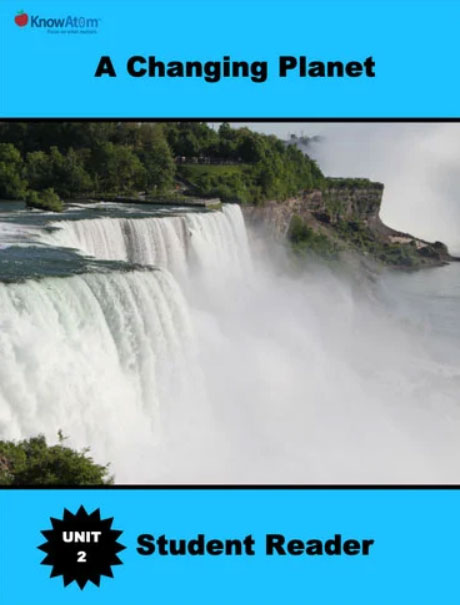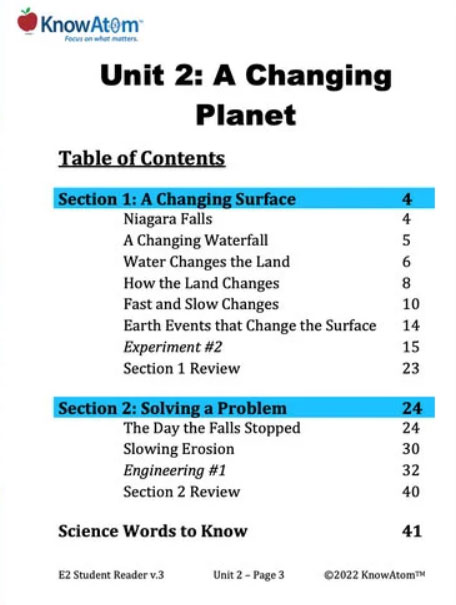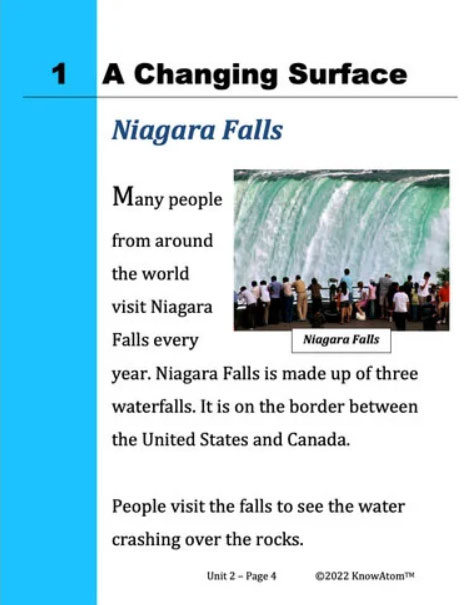A Changing Waterfall
A long time ago, Niagara Falls looked very different. It used to be made up of one waterfall. It also was in a different place. It has moved backwards over time. These changes happened because water changes Earth’s surface as it moves over it. To change means to make something different from what it is now.
Water Changes the Land
Earth’s surface is made up of different materials. For example, the land is made up of soil, rocks, and sand. As water moves over the land, it changes these Earth materials.
Weathering happens when Earth materials are broken down into smaller pieces. Water weathers the land as it moves over it. Wind, plants, and animals also weather Earth materials.
Erosion happens when these weathered pieces of Earth materials are moved to new places. For example, moving water carries with it weathered Earth materials. This is erosion. Wind can also erode Earth materials. As the wind blows, it carries with it small pieces of weathered Earth materials.








